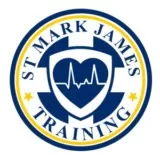
Definition for gunshot wounds:
- When trauma is sustained from the discharge of firearms or munitions, it is called a gunshot wound or ballistic trauma.
- The high velocity from the bullet released causes damage to the surrounding tissues rather than confining in the path it took internally.
- The two most significant factors in causing major injury or even death are:
- Projectile path
- Placement
- The most vulnerable areas are the head and torso.
- Usual instant injurious effect of a bullet
- Severe bleeding, with a possibility of the wound leading to hypovolemic shock, a condition distinguished by the insufficient amount of oxygen delivered to vital organs.
Before performing first aid on gunshot wounds victims
- Immediately call for help. Call for an ambulance.
- Before attempting to give first aid to the victim, make sure that the immediate surroundings is safe.
- If the victim was unintentionally shot, ensure that everyone’s gun is pointed away from anyone else and cleared of ammunition.
- If a crime was observed, make sure that the shooter is no longer in the vicinity to avoid increasing the number of victims.
- Do not move the victim unless it is necessary (access care or dangerous surroundings).
Basic first aid
- If protective gear is available, wear them.
- Apply direct pressure to the wound to cease the bleeding. Use an absorbent cloth or dressing.
- It is necessary to keep the pressure in place. Apply new dressings over the old ones instead of removing the soaked dressings to avoid disturbance.
- Check for the victim’s circulation, airway, breathing, disability/ deformity and exposure.
- Check for the victim’s pulse by the groove on the neck. If no pulse is detected, initiate CPR.
- If the victim is unconscious, ensure that there is no obstruction in the airway. Turn the victim’s head to the side.
- To check for breathing, position own cheek a few inches from the victim’s nose and mouth. Feel for air and watch for rise and fall of chest. Begin rescue breathing if necessary.
- Also observe if there is injury on the spinal cord or neck and other fractures or dislocations. If possible, find the exit wound.
- Be prepared to treat the victim for shock.
http://firstaid.about.com/od/cpr/u/08_Everyday_First_Aid.htm
http://firstaid.about.com/od/firstaidbasics/u/08_Emergencies.htm
http://firstaid.about.com/od/bitesstings/qt/07_shark_bites.htm
